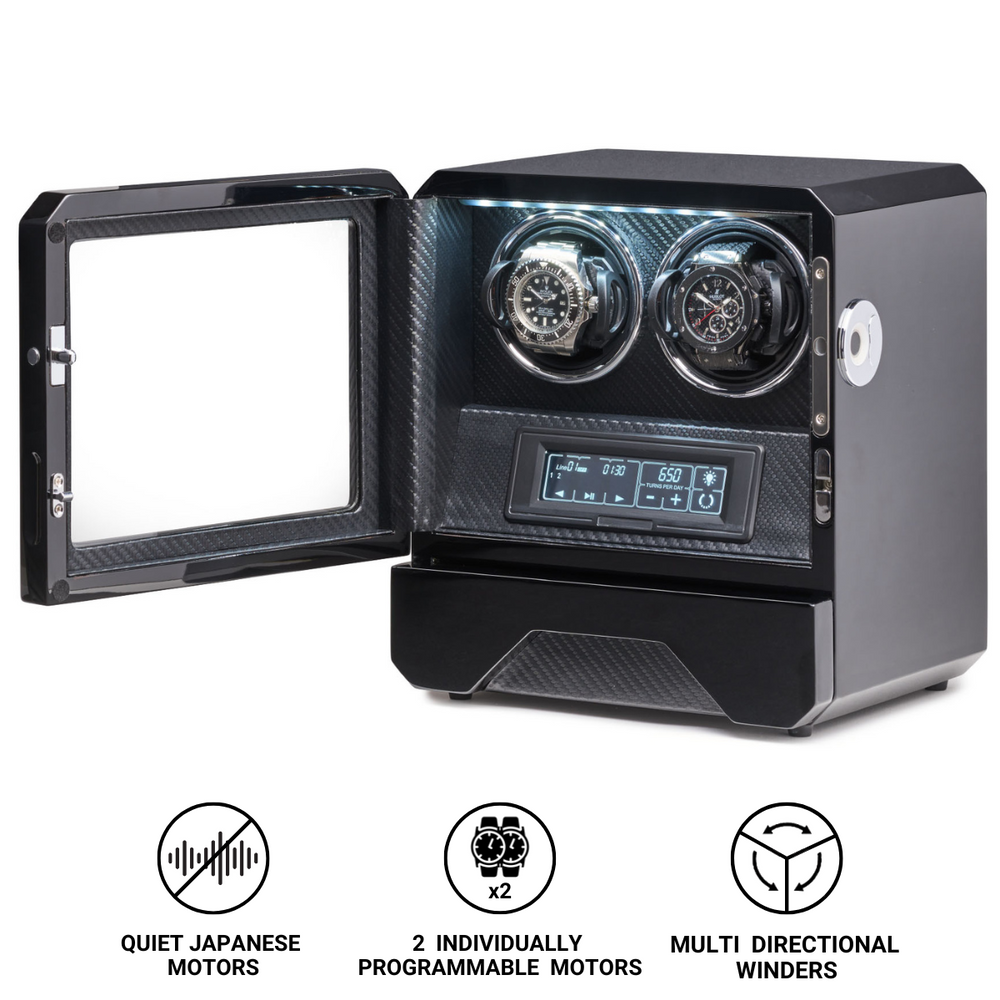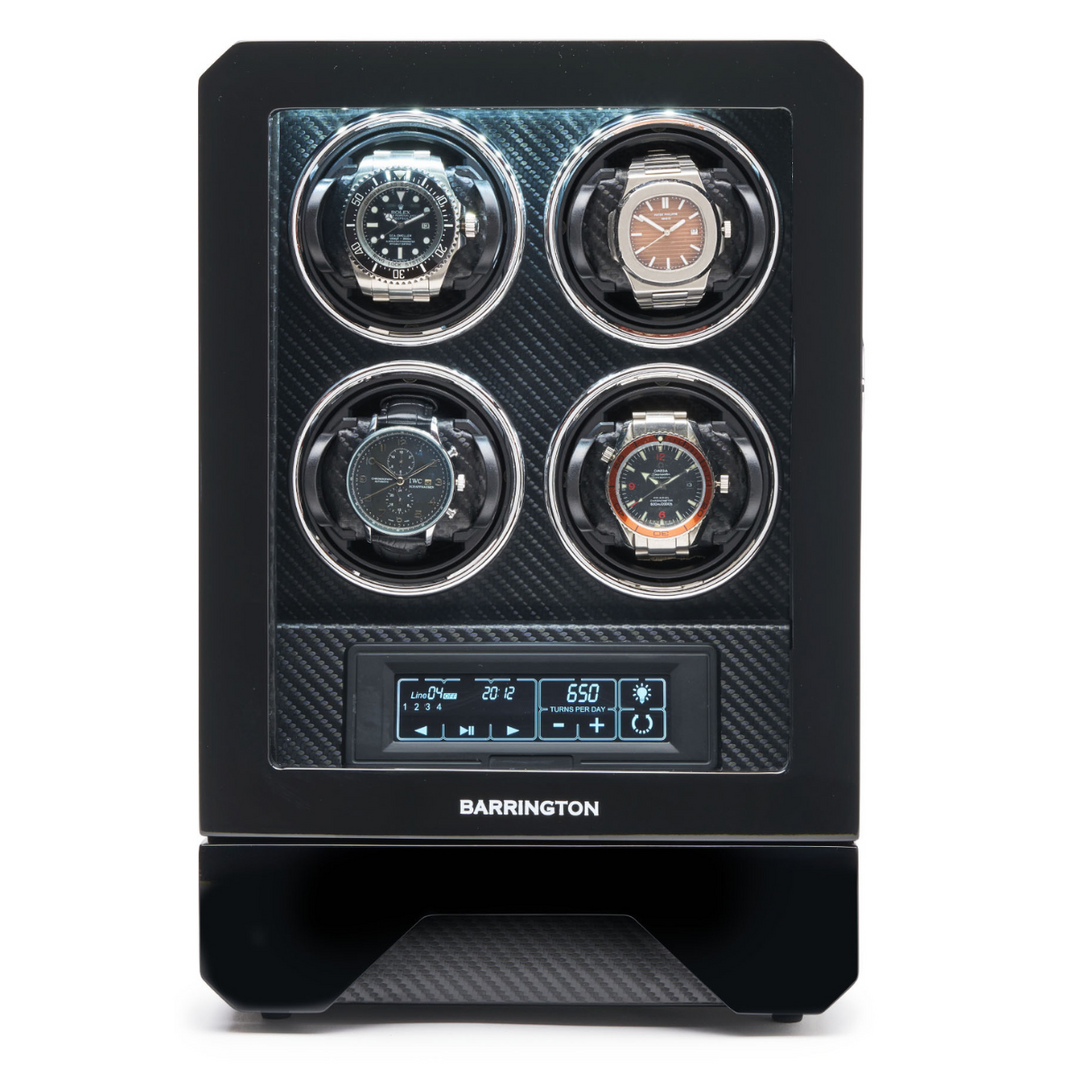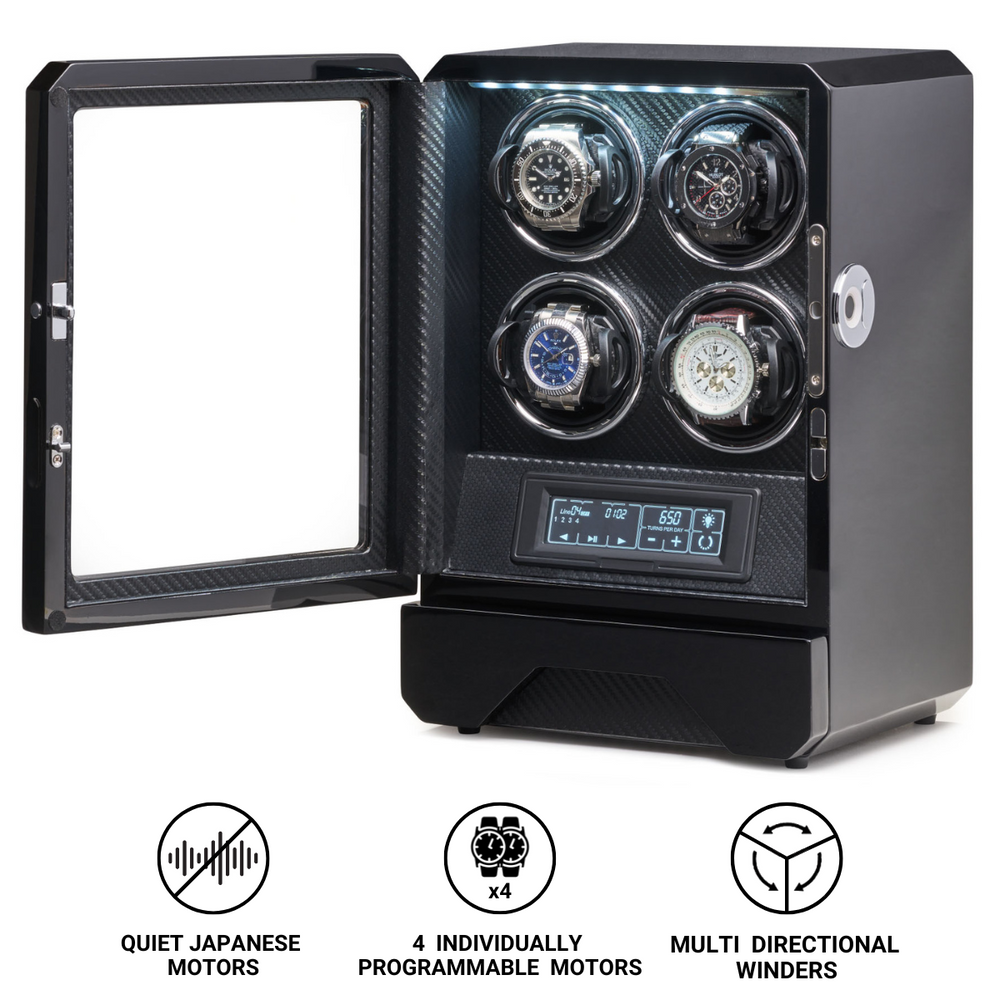What is Flat Crystal?
Among the many subtle details that define a watch’s character, the crystal plays one of the most crucial yet often overlooked roles. It is the transparent barrier that protects the dial and hands from the external world while shaping the way light interacts with the timepiece. The flat crystal, in particular, has become the hallmark of modern watch design. Defined by its clean, planar surface and minimalist aesthetic, it conveys precision, clarity, and contemporary sophistication.
Flat crystals are favoured in modern watchmaking for their optical clarity, scratch resistance, and sleek appearance. Unlike domed or curved crystals, which lend a vintage or classical feel, the flat crystal reflects the design language of precision engineering and understated elegance. Its geometry enhances legibility, complements angular case designs, and contributes to a sense of restrained modernity that has become synonymous with today’s luxury and professional watches.
The Role of the Crystal in Watchmaking
The crystal is one of the most essential components of a watch, serving both functional and aesthetic purposes. Functionally, it acts as a protective shield, preventing dust, water, and impact from damaging the delicate dial and movement beneath. Aesthetically, it frames the dial, influencing how the watch captures and reflects light.
Watch crystals come in various shapes and materials, each offering distinct advantages. Domed and curved crystals are often associated with vintage watches, enhancing depth and visual distortion that evokes the charm of early horology. The flat crystal, by contrast, represents a different philosophy: one of technical precision and modern simplicity.
Its planar surface ensures minimal distortion when viewing the dial from any angle. This clarity is especially valued in professional timepieces such as pilot, field, and dive watches, where legibility is paramount. Moreover, the flat design aligns harmoniously with geometric, architectural case shapes favoured in contemporary watchmaking.
The Evolution of Watch Crystals
The use of transparent protective covers in timepieces dates back several centuries. Early pocket watches used glass to protect their enamel dials, but glass was fragile and prone to shattering under impact. As wristwatches became popular in the early 20th century, the need for stronger and more reliable materials drove experimentation and innovation.
Initially, crystals were made from mineral glass, which offered better durability than standard glass but remained susceptible to scratching. In the mid-20th century, acrylic and plastic crystals became common, especially in tool watches. These materials were lightweight, shatter-resistant, and easy to polish, though they scratched easily.
The advent of synthetic sapphire in the latter half of the 20th century revolutionised watchmaking. Sapphire crystals combined exceptional hardness with optical clarity, offering both strength and beauty. As manufacturing techniques advanced, sapphire crystals could be produced in different shapes, including the perfectly flat forms that now dominate modern designs.
The transition from domed to flat crystals mirrored broader shifts in design. The mid-century fascination with aerodynamics and curvature gave way to the clean lines and geometric minimalism of contemporary aesthetics. The flat crystal emerged as a symbol of this new modernity, representing technical refinement and visual purity.
Characteristics of a Flat Crystal
The defining feature of a flat crystal is its perfectly level surface. It does not curve outward like a domed crystal or bend inward like a concave one. This simplicity, however, belies the complexity of its manufacture and the precision required to achieve flawless optical performance.
Flat crystals offer several distinct characteristics that make them appealing to both watchmakers and collectors.
-
Optical Clarity
Because of their geometry, flat crystals provide an undistorted view of the dial, ensuring perfect legibility at any angle. This clarity is particularly valued in watches designed for professional use, where precision reading is essential. -
Modern Aesthetic
The flat crystal complements the clean, sharp lines of contemporary case designs. It lends a sense of sophistication and refinement, aligning with the minimalist trend in luxury and everyday watches alike. -
Durability
When crafted from sapphire or hardened mineral glass, flat crystals offer excellent scratch resistance and toughness. Their simple geometry also makes them less vulnerable to chipping at the edges compared to highly domed alternatives. -
Ease of Maintenance
Flat crystals are easier to replace or polish than curved ones. Their standardised shape simplifies servicing, which appeals to both watchmakers and owners concerned with long-term maintenance.
Despite these advantages, flat crystals have one notable drawback: they can reflect light more intensely than domed variants. To mitigate glare and improve visibility, many manufacturers apply anti-reflective coatings to one or both surfaces of the crystal.
Materials Used for Flat Crystals
The performance and appearance of a flat crystal depend largely on its material composition. Watchmakers choose materials based on the intended function, price range, and aesthetic of the timepiece.
-
Sapphire Crystal
Synthetic sapphire is the most prestigious and widely used material for modern flat crystals. It ranks nine on the Mohs scale of hardness, second only to diamond, making it highly resistant to scratches. Its optical clarity allows for perfect transparency, and anti-reflective coatings further enhance legibility. Sapphire’s cool, crisp appearance suits contemporary designs, reinforcing the precision and quality associated with high-end watches. -
Mineral Glass
Mineral glass offers an excellent balance of affordability and performance. It is tougher than standard glass and can be heat-treated for additional durability. Although it is more prone to scratching than sapphire, it can withstand impacts better. Many mid-range watches use mineral glass flat crystals for their cost-effectiveness and clarity. -
Acrylic (Hesalite)
Acrylic crystals, often known as Hesalite, were widely used in the mid-20th century and remain popular for vintage reissues and tool watches. They are lightweight and shatter-resistant but scratch easily. However, scratches can be polished out, making them ideal for watches that value practicality over luxury. -
Other Advanced Materials
Recent innovations include hybrid crystals combining sapphire and ceramic or layered composites designed to reduce reflection and increase strength. These materials push the boundaries of what flat crystals can achieve, blending aesthetics with high performance.
Each material brings its own balance of clarity, strength, and cost, allowing manufacturers to tailor the flat crystal to the watch’s intended purpose.
The Role of Flat Crystals in Design Aesthetics
The flat crystal is more than a protective component; it is an integral part of a watch’s visual identity. Its planar surface reinforces a sense of symmetry and order, complementing minimalist dials and geometric case designs. It creates a distinct impression of modernity and precision, aligning perfectly with architectural or industrial-inspired timepieces.
For designers, the flat crystal offers a blank canvas for light interaction. Because it lacks curvature, reflections tend to be sharp and mirror-like, adding to the watch’s visual crispness. When paired with brushed or polished metal surfaces, the contrast between materials enhances depth and texture.
The choice of crystal shape also affects how a watch feels on the wrist. Flat crystals contribute to thinner, more streamlined profiles, making the watch appear sleek and contemporary. This has made them particularly popular in dress and everyday watches where discretion and elegance are key.
At the same time, the visual directness of a flat crystal suits the utilitarian ethos of field, pilot, and diver watches. It underscores the idea of precision engineering, clarity, and functional purpose without unnecessary embellishment.
Anti-Reflective Coatings and Optical Performance
Because of their planar geometry, flat crystals are more susceptible to reflections under bright light. To address this, most high-quality flat crystals are treated with anti-reflective (AR) coatings. These coatings, typically applied to one or both surfaces, reduce glare by minimising light reflection and enhancing transmission through the crystal.
Single-sided AR coatings, applied to the inner surface, prevent external wear while improving dial visibility. Double-sided coatings provide maximum clarity but may be more prone to scratching if not carefully maintained. Some manufacturers tint their AR coatings slightly blue or purple, creating a subtle visual signature when light hits the crystal.
Advances in nanotechnology have also allowed for the development of more durable, multi-layer coatings that resist smudges and fingerprints while maintaining optical neutrality. The result is a crystal that remains clear and legible in all lighting conditions, reinforcing the modern appeal of the flat design.
Flat Crystals in Different Watch Categories
The flat crystal appears across nearly every segment of watchmaking, from luxury pieces to utilitarian instruments.
In dress watches, flat crystals create a refined and elegant look. Their unobtrusive profile allows the watch to slide easily under a cuff while maintaining a contemporary aesthetic. Brands such as Patek Philippe, Nomos, and Grand Seiko frequently employ flat sapphire crystals to achieve minimalist elegance.
In sports and tool watches, flat crystals enhance legibility and robustness. Models like the Omega Seamaster Aqua Terra or the Tudor Ranger rely on flat sapphire for clarity under diverse lighting conditions. The lack of curvature also reduces potential distortion at shallow viewing angles, which is essential for field and aviation use.
Even in smartwatches and digital instruments, the flat crystal remains the standard choice due to its compatibility with touch-sensitive surfaces and modern industrial design. Its practicality and sleekness transcend mechanical watchmaking, demonstrating its universal relevance.
The Appeal of Flat Crystals in Contemporary Watchmaking
The popularity of flat crystals reflects broader cultural trends in design. Modern consumers gravitate toward clarity, precision, and minimalism—qualities that the flat crystal perfectly embodies. Its clean lines and optical accuracy align with the aesthetics of contemporary architecture, technology, and product design.
Collectors and enthusiasts also appreciate the flat crystal for its authenticity and practicality. It represents a focus on function and restraint rather than ostentation. In a world where many designs strive for attention through complexity, the flat crystal stands as a symbol of purity and purpose.
Moreover, the evolution of materials and coatings has elevated the flat crystal from a purely functional component to a mark of quality craftsmanship. Its presence signals thoughtful design, technical sophistication, and commitment to durability.
Conclusion
The flat crystal is one of the quiet triumphs of modern watchmaking. It combines simplicity with sophistication, providing a clear, undistorted window into the artistry beneath. Its geometry embodies the precision and minimalism that define contemporary design, while its strength and clarity make it an ideal companion for both everyday wear and professional performance.
From the polished refinement of dress watches to the rugged precision of tool models, the flat crystal remains an essential part of horological evolution. It reflects not only light but also the philosophy of modern watchmaking—one that values clarity, functionality, and enduring elegance above all else.
In every sense, the flat crystal is more than a transparent cover; it is the face of modern timekeeping, capturing the spirit of today’s horology in its purest and most refined form.









